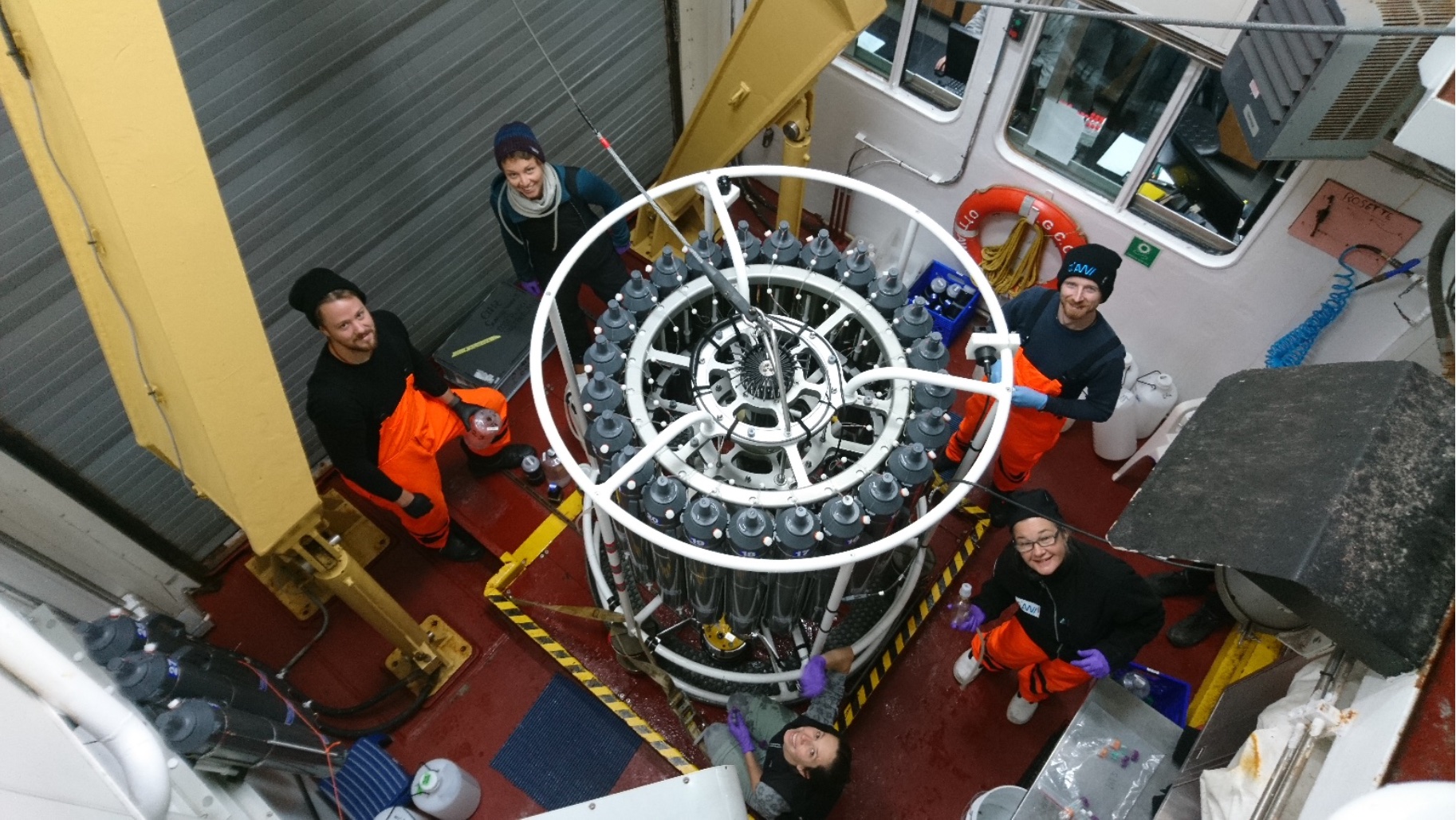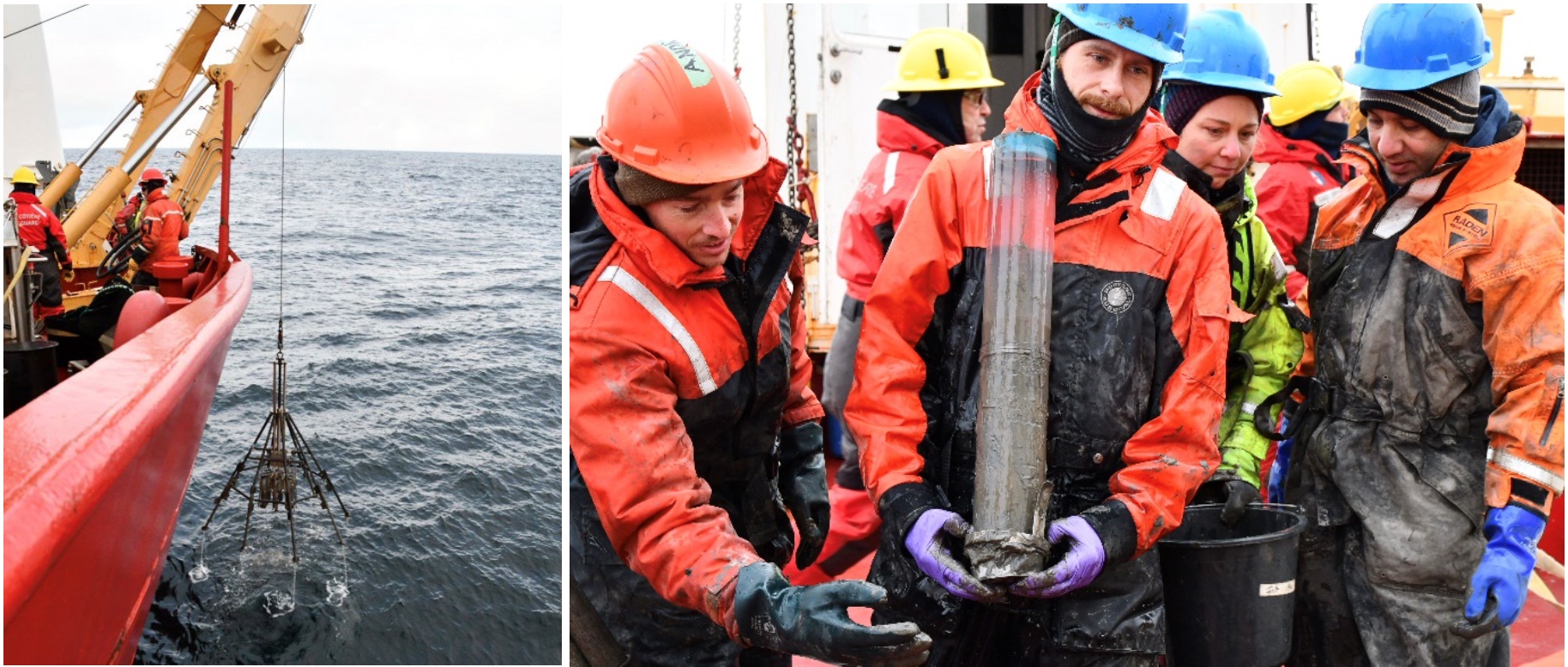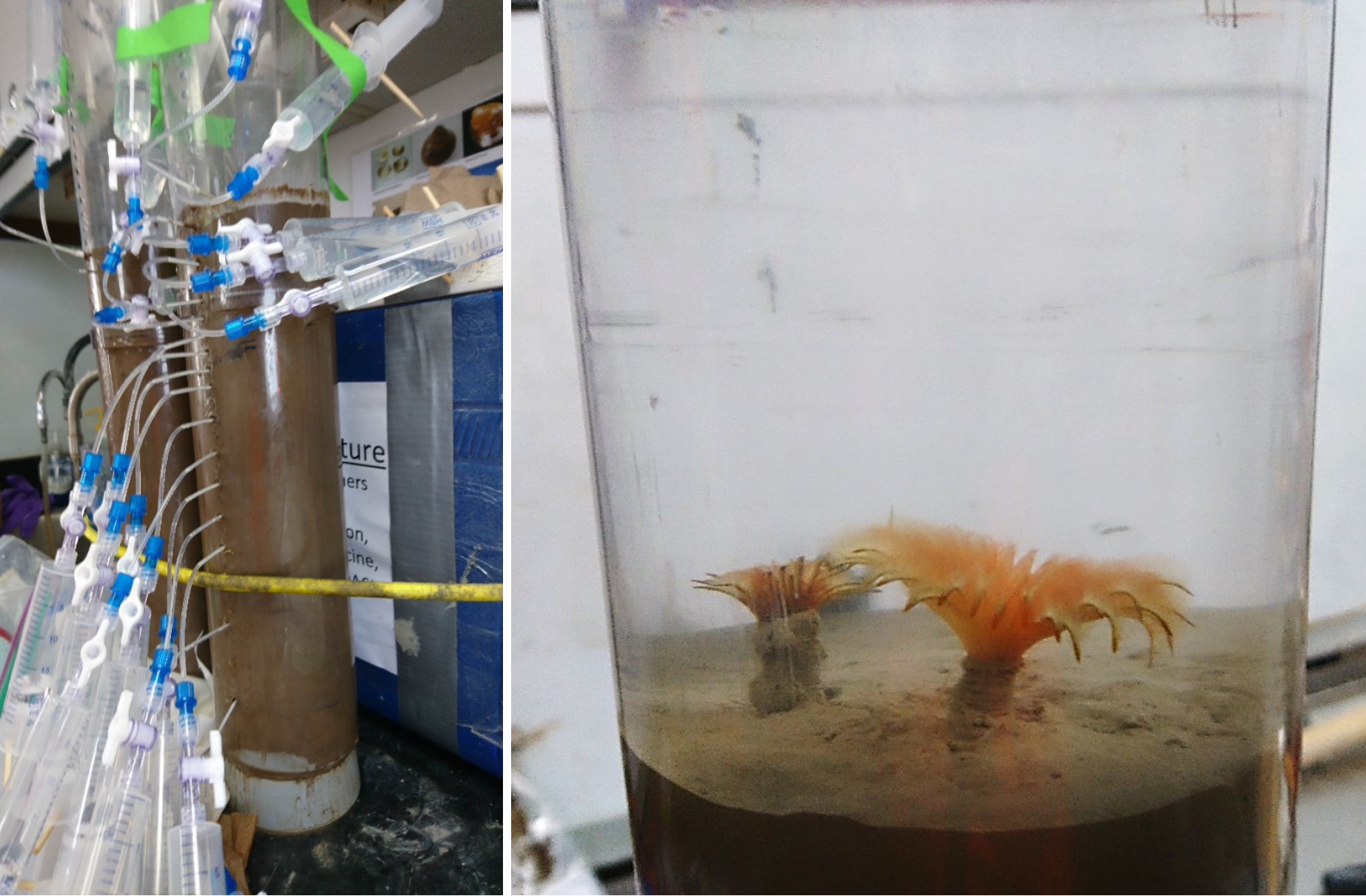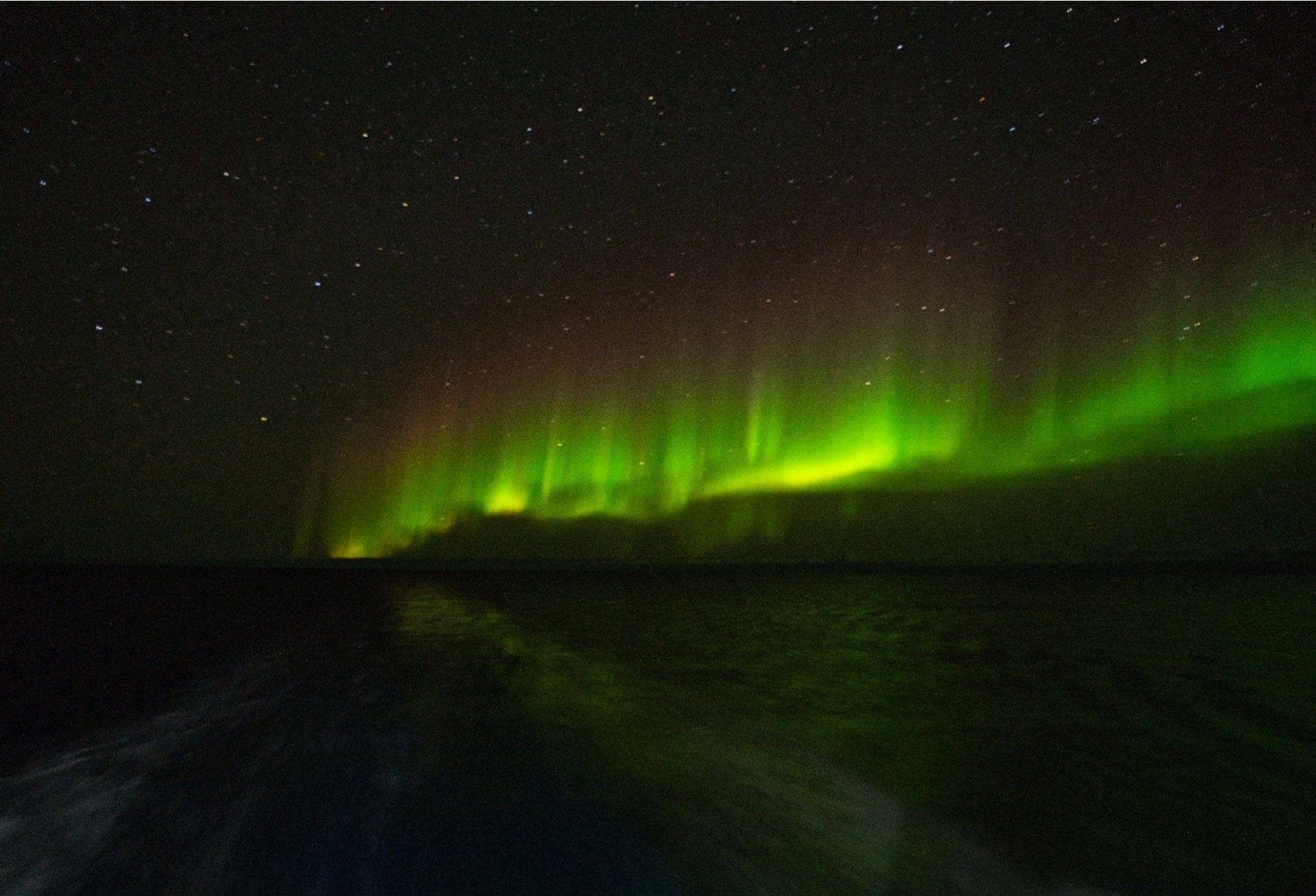As quickly as an arctic summer begins, it is also over again. However, this does not detract from the work on board. Electricity, light and heat are available in virtually unlimited quantities. While the crew works separately in two 12-hour shifts, our alarm clock rings whenever a station is due. The work in our PeCaBeau project takes place exclusively in the Beaufort Sea. This leads to a concentration of work in the area. Sometimes it takes only two hours to drive from the end of one station to the next. Sometimes there is hardly any time to get the equipment and tools ready for use again.

The last weekly report already gave information about the order of the equipment driven at our stations. You remember: 1) seafloor reconnaissance in preparation for drilling, 2) CTD and rosette for water column characterization and water sampling, 3) optics and radiometry for light and radiation measurements, 4) multicorer for 8 short sediment cores, 5) drilling of long cores. Now, when the equipment is successfully back on board the real game is about to start.

Four people take care of the bottles of the rosette. 300 liters of water go either directly into various analysis bottles or into storage bottles, which then go to the filtration lab. There, the time-consuming filtration process follows. For various analyses in the domestic laboratories, we need either the residue on the filter or sometimes the filtrate behind the filter. For example, we are interested in dissolved organic carbon that enters the Beaufort Sea from coastal erosion and from input from the Mackenzie River. But the same is true for the carbon particles that float in the water and have the same origin. In order to cleanly separate the two, filtration is required. This is because these two carbon groups behave chemically and physically differently simply because of their size (dissolved: < 0.0007 mm) and particulate: > 0.0007 mm).
While the water team is already busy filtering, the multicorer comes back from the depths. With a little luck, 8 short cores including bottom water are on deck. We can justifiably say that the initial skepticism among the crew members and other science teams towards this instrument has turned into enthusiasm. That's because it works and almost always delivers 8 cores.

Again, after the game is before the game. One core goes into the archive, which is fast. From two cores, Thomas Bessé-Demers from the University of Laval in Québec City extracts the water from the pores. To do this, he uses so-called rhizones, which function like the roots of plants. The water is sucked out of the ocean floor with negative pressure and collected in syringes behind it. His experimental setup looks like Frankenstein's (see figure below). Four more cores are cut into one-centimeter slices each and frozen at -20°C. This process takes hours.

Meanwhile, the long coring device plunges into the seafloor and comes back on deck with a sediment core several meters long. The device is disassembled and the core is cut into manageable 1-meter pieces of 10-15 kg each. These long core pieces go into the refrigerated container until they are analyzed in domestic laboratories. But not immediately. Before that, they are scanned on a geophysical core logger bench by Matt O'Regan (Stockholm University). Parameters such as magnetic susceptibility, density and electrical resistivity tell us a lot about the sediment even before we can take a closer look at it.
Last week's report said: First station successfully completed. After another ten days at sea and countless day and night shifts, we have now completed 23 stations. We were able to recover sample material and data from all planned 23 stations to our complete satisfaction and without any significant technical problems. Everything that comes now is bonus material. We are working on it! Don't worry.

The weather is not letting us down. We still have temperatures around freezing. The wind blows mostly below 40 km/h. Wave heights over 2m are rare. Perfect working conditions for this time of the year. Only the sun makes itself scarce.
We leave the southern Beaufort Sea. Course north- north-east. Captain and chief scientist want to lead us into the ice. The opportunity seems favorable for a visit to...more on that later.
All expedition participants are well. Follow our cruise track at https://data.amundsen.ulaval.ca/.


